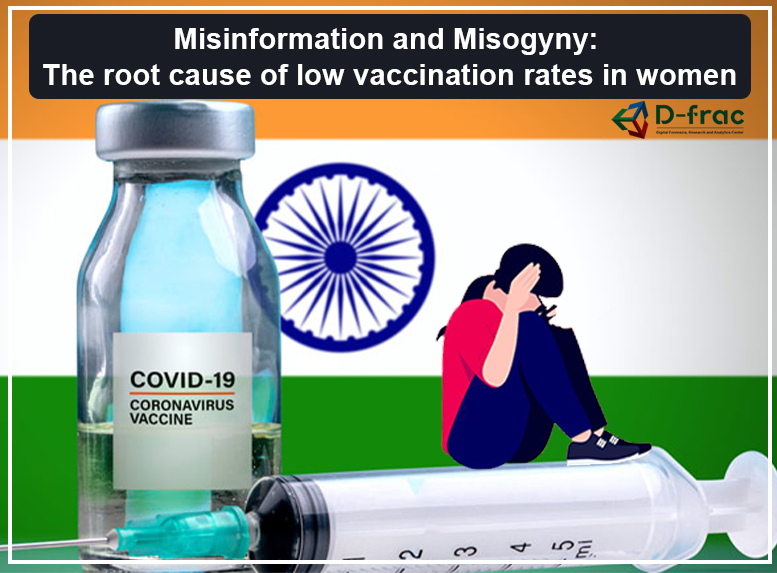In the last couple of weeks India has managed to administer 54 crore doses to Indian citizens. Out of which approximately 28 crore doses have been administered to men and 25 crore doses have been administered to women. There seems to be a huge gap of 3 crore people between the two sexes. According to the 2011 census, the sex ratio of India stood at 940 females per 1000 males. But the current vaccine ratio stands at about only 867 females to 1000 males, making it significantly worse than the overall sex ratio of the country.
Biggest disparity in these numbers is witnessed in Uttar Pradesh where there is a gap of 50 lakh people between men and women followed by Bihar with 20 lakh and then Haryana and Delhi where there is a gap of 15 lakh people.

These numbers are alarming as medical officials and scientists predict that the 3rd wave of COVID-19 in India is inevitable. Slow or incomplete vaccination doses in the female population may lead to them being adversely affected by the third wave where a disproportionate amount of women could potentially contract the virus.
Misinformation and misogyny: The root cause of low vaccination rates in women
India has a long history of preserved patriarchal traditions that continue to plague all social and economic classes. In addition to majority of the households in India living in a patriarchal system, the gender discrimination becomes intersectional in nature when we talk about caste and religion.
Various studies have been done over the years that have shown that women in India have more trouble accessing safe and affordable healthcare than men. Women are encouraged to keep their health problems to themselves. This especially manifests with respect to menstrual health and fertility. Women are told to pride themselves on their fertility and are shunned from the society or deemed unfit for marriage if they are to be found having fertility issues.
Another problem in the country is the fact that women are not valued at the same level as men. Their stature in a patriarchal household will always remain below the patriarch of the family and hence their concerns are more likely to be sidelined.
Women’s participation in the workforce is historically lower that men with women being more likely being confined to the household while her husband is out on work. This would mean that the man of the family is more likely to get the vaccine through a company mass vaccination drive (as in the case of Zomato and Urban Company) whereas his wife is likely to fall behind in this regard.
Misinformation is one of the biggest culprits why even after having access to vaccines, women may choose not to take the vaccine. In interviews conducted by Institute of Current World Affairs, it was found that women usually belonging to lower-middle income households have encountered various streams of misinformation regarding the vaccine and how it may affect their fertility. Women seem to be getting this kind of information from whatsapp and facebook and rather than clearing their doubts, it only fuels their fears.
The combination of systemic sexism when coupled with misinformation is the root cause of slow vaccination rates in women. A comprehensive strategy is needed on all levels to achieve a better ratio of vaccinations in women.





